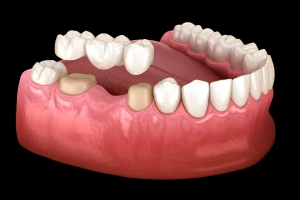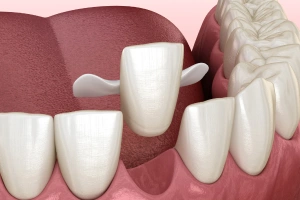
How Dental Bridges Work
A dental bridge consists of one or more artificial teeth (called pontics) that fill the gap left by missing teeth. These are anchored in place by the surrounding natural teeth or by dental implants. The result is a stable, natural-looking restoration that makes eating and speaking easier while maintaining your facial shape and preventing teeth from shifting.
Types of Dental Bridges

Traditional Bridge
The most common type, this bridge uses crowns placed on the teeth next to the missing space to support the artificial tooth. It’s durable, reliable, and ideal when healthy teeth are present on both sides of the gap.

Cantilever Bridge
Used when there’s only one tooth next to the missing space, this bridge anchors the replacement tooth to that single supporting tooth.

Maryland Bridge
This conservative option uses a metal or porcelain framework bonded to the back of nearby teeth, minimizing the need for reshaping them.
Bring Back Your Complete Smile
Dental bridges are a long-lasting, effective way to restore missing teeth and protect your oral health. If you’re ready to eat, speak, and smile with confidence again, schedule a consultation with your dentist to find the bridge option that’s right for you.

